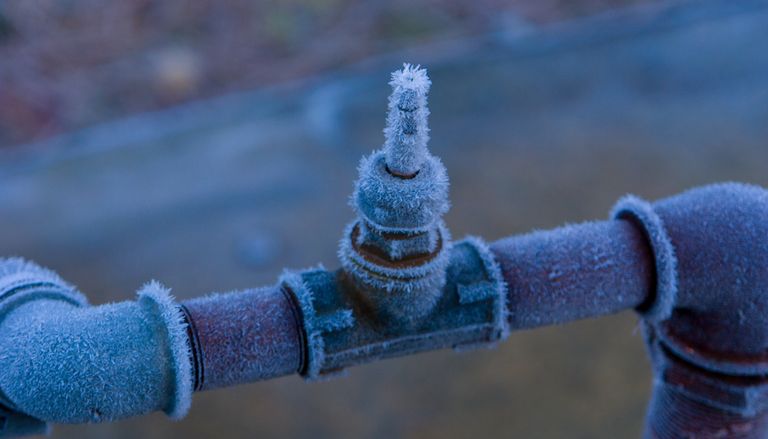Advice for Preventing Frozen Pipes in Cold Weather: Professional Advice
Advice for Preventing Frozen Pipes in Cold Weather: Professional Advice
Blog Article
How do you actually feel when it comes to 6 Ways to Prevent Frozen Pipes?

Winter can ruin your plumbing, especially by freezing pipes. Below's how to avoid it from taking place and what to do if it does.
Intro
As temperature levels drop, the risk of frozen pipes boosts, possibly resulting in expensive repair services and water damages. Comprehending exactly how to avoid icy pipes is important for house owners in cool environments.
Recognizing Frozen Pipes
What causes pipelines to ice up?
Pipes freeze when revealed to temperatures listed below 32 ° F (0 ° C) for prolonged periods. As water inside the pipelines ices up, it expands, taxing the pipeline walls and possibly causing them to break.
Dangers and problems
Frozen pipelines can cause supply of water disturbances, residential property damage, and costly repairs. Burst pipelines can flooding homes and cause considerable structural damage.
Indicators of Frozen Pipeline
Determining icy pipes early can avoid them from bursting.
Exactly how to recognize frozen pipes
Search for decreased water circulation from taps, uncommon odors or noises from pipelines, and noticeable frost on subjected pipelines.
Avoidance Tips
Insulating vulnerable pipelines
Cover pipes in insulation sleeves or use warm tape to secure them from freezing temperature levels. Concentrate on pipelines in unheated or external locations of the home.
Home heating methods
Keep interior rooms adequately heated up, specifically locations with plumbing. Open up cupboard doors to enable cozy air to flow around pipelines under sinks.
Securing Outdoor Pipes
Garden pipes and outdoor faucets
Disconnect and drain yard hose pipes before winter months. Mount frost-proof spigots or cover outdoor faucets with shielded caps.
What to Do If Your Pipes Freeze
Immediate actions to take
If you believe frozen pipes, maintain faucets open up to ease stress as the ice melts. Utilize a hairdryer or towels taken in hot water to thaw pipelines gradually.
Long-Term Solutions
Structural modifications
Take into consideration rerouting pipelines away from outside wall surfaces or unheated locations. Add additional insulation to attics, basements, and crawl spaces.
Upgrading insulation
Buy premium insulation for pipes, attics, and wall surfaces. Appropriate insulation aids maintain constant temperature levels and decreases the threat of icy pipelines.
Verdict
Avoiding icy pipelines requires aggressive measures and quick responses. By comprehending the reasons, signs, and preventive measures, home owners can protect their plumbing during cold weather.
5 Ways to Prevent Frozen Pipes
Drain Outdoor Faucets and Disconnect Hoses
First, close the shut-off valve that controls the flow of water in the pipe to your outdoor faucet. Then, head outside to disconnect and drain your hose and open the outdoor faucet to allow the water to completely drain out of the line. Turn off the faucet when done. Finally, head back to the shut-off valve and drain the remaining water inside the pipe into a bucket or container. Additionally, if you have a home irrigation system, you should consider hiring an expert to clear the system of water each year.
Insulate Pipes
One of the best and most cost-effective methods for preventing frozen water pipes is to wrap your pipes with insulation. This is especially important for areas in your home that aren’t exposed to heat, such as an attic. We suggest using foam sleeves, which can typically be found at your local hardware store.
Keep Heat Running at 65
Your pipes are located inside your walls, and the temperature there is much colder than the rest of the house. To prevent your pipes from freezing, The Insurance Information Institute suggests that you keep your home heated to at least 65 degrees, even when traveling. You may want to invest in smart devices that can keep an eye on the temperature in your home while you’re away.
Leave Water Dripping
Moving water — even a small trickle — can prevent ice from forming inside your pipes. When freezing temps are imminent, start a drip of water from all faucets that serve exposed pipes. Leaving a few faucets running will also help relieve pressure inside the pipes and help prevent a rupture if the water inside freezes.
Open Cupboard Doors
Warm your kitchen and bathroom pipes by opening cupboards and vanities. You should also leave your interior doors ajar to help warm air circulate evenly throughout your home.

We had been made aware of that write-up about Helpful Tips to Prevent Frozen Pipes this Winter through a pal on our other blog. Do you know somebody else who is fascinated by How to prepare your home plumbing for winter weather? Please feel free to promote it. Thanks for your time invested reading it.
Call Us Now Report this page